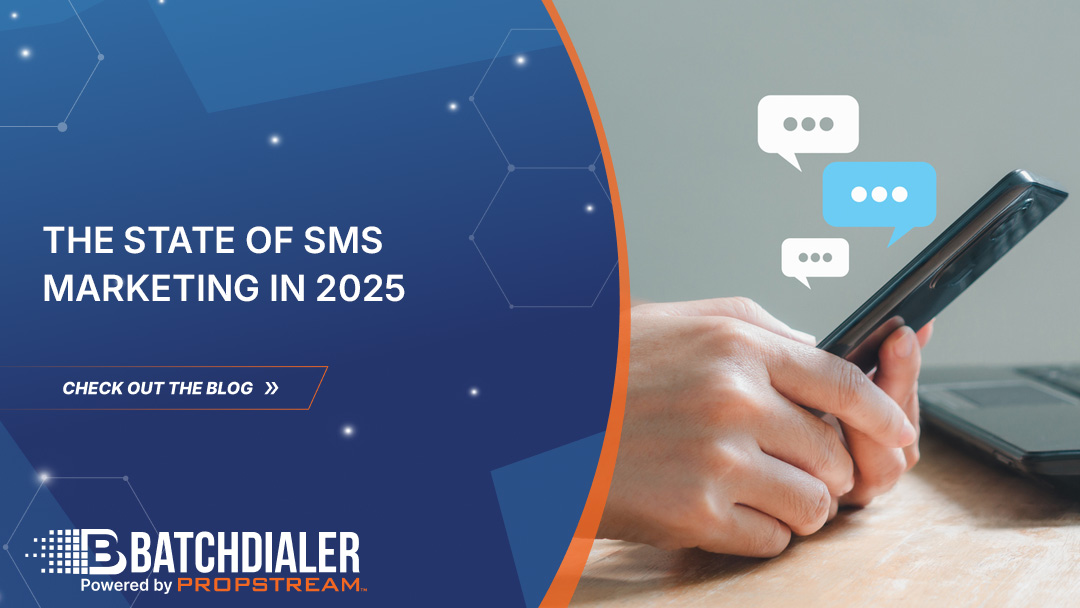Many businesses rely on placing high volumes of outbound calls in order to connect with customers and pursue leads quickly and effectively. While cold calling is a reliable and effective sales method, callers who aren’t paying close attention to their phone number reputations can be erroneously flagged as spam.
Factors such as a business’s call volume, their rotation of different numbers, and the length of their call times can have a significant impact on their phone number reputation. These are just a few of the most important factors carriers consider when they decide whether to label you as a spam caller, or even worse, “scam likely.” It is common for legitimate businesses to receive this erroneous label, with up to 40% of legitimate businesses having been flagged.
The individuals making the calls can contribute to the company’s phone number reputation, but only within limits. To truly protect their reputation, businesses must invest in reliable data and technology. With the combined efforts of callers and their support teams, even the most high-volume callers shouldn’t have to worry about getting their calls incorrectly labeled or blocked by carriers. Carefully following the following practices is the most effective way to avoid what can become a major operational hurdle.
What should high volume callers do?
There are several protocols that businesses can implement to ensure that they’re following the industry’s best practices. By taking certain steps, callers can reduce the likelihood that they will face difficulties getting their calls through without interruption.
Restrict the number of calls per number
Generally, you shouldn’t make more than 150 calls per day from any given phone number. Increasing your call volume past that point will raise flags with carriers. Eventually, your calls may start showing up as “Potential Spam”, “Scam Likely” or other negative call labels. In extreme cases, your number could be blocked altogether.
This isn’t to say that businesses should limit the number of outbound calls to 150 per day. Instead, businesses need to purchase multiple outbound phone numbers and rotate the numbers they use throughout the day. That way, high volume callers won’t be forced to stop calling once they’ve made 150 calls.
Increase call duration
Call duration is one of the most important and undervalued factors in how carriers label numbers as potential spam. A series of brief calls can cause the caller to be labeled as potential spam, even without displaying many other suspicious behaviors.
While there isn’t a specific duration to shoot for, even a brief exchange can raise the call duration enough to help minimize the risk of being flagged as spam. That’s because spam callers often fail to engage in meaningful conversations with the people they’re calling. Instead, they’ll only stay on the phone for a few seconds before moving on to the next call. When legitimate salespeople have a low average call duration, phone carriers will flag them for resembling the same pattern of behavior as spammers.
High volume callers should do their best to have real conversations with the people they’re dialing. That doesn’t mean that every call has to take ten minutes, especially because they can’t control the conversation. Having said that, callers can engage their prospect’s interest by asking them questions to keep them on the line. Not only will it help with your phone number reputation, it’s what skilled cold callers do already.
Leave voicemail messages
Leaving a voicemail message can be enough to improve the average call duration and avoid being flagged as spam. Too many high volume callers hang up as soon as they hear someone’s voicemail. By simply leaving a voicemail they can lengthen the average call duration and give interested prospects the opportunity to return their call.
If you’re in the habit of hanging up whenever you hear someone’s voicemail, your average call length will resemble a spammer’s. When consumers receive a missed call but no message, they are more likely to think they’ve been contacted by a spammer instead of a legitimate caller. For that reason alone, it’s worth the extra ten to fifteen seconds to leave a quick voicemail message.
Leaving a voicemail can also give people an opportunity to call you back and increase conversion rates. People who receive sales calls aren’t as averse to being contacted as one might expect. A survey of mobile users found that 69% of consumers want carriers to send callers they don’t know to their voicemail, as opposed to blocking them automatically.
Rotate flagged phone numbers
When you find out that a number you’ve been using has been showing up as spam, it’s time to stop using that phone number. That doesn’t mean you need to throw those numbers out forever. Letting a phone number “cool off” by not using it for 60 days is usually enough to correct any negative flags a number has received. High volume callers can also contact the major phone carriers, to have this label removed from a particular number.
Use personalized pitches
Third-party call blocking and labeling apps rely heavily on user feedback in order to identify potential spammers and scammers. While the FCC and phone carriers rely on these reports to a lesser extent, substantial negative consumer feedback can affect how they label you as well.
High volume callers can personalize their pitches and tailor their conversations to avoid anything that resembles the tactics of spam callers. This means that you should avoid using vague or too-good-to-be-true sales pitches, aggressive sales tactics, pre-recorded voice messages, agents who speak with a robotic delivery, or anything else commonly associated with spam calls.
What should caller support do?
As we stated earlier, callers themselves can only do so much. Business protocols and technology solutions can exert more power to maintain and protect a business’s phone number reputation.
Register numbers with carriers
Registering your phone numbers with carriers can pay off in significant ways. By completing this registration, you tie your phone numbers to your CNAM, or caller ID name, to make sure carriers understand who owns the phone number.
Unfortunately, malicious callers may attempt to copy your phone number in order to make spam or scam calls. CNAM registration can protect you in that scenario by making it easier for you to dispute calls made without your permission. That protects your reputation, prevents you from being mislabeled, and lets carriers know who the true owner of your number is.
If you’re not sure where to start, we’ve compiled a list of all of the free online services organizations can use to register their phone numbers. While it’ll require some time and effort upfront, it’s one of the most effective ways to keep your numbers in operation and protect your business reputation.
Ensure A-attestation on all calls
Call attestation is a measure of how much trust and information the call’s carrier has with the caller. Poor call attestation can doom a caller from the beginning, guaranteeing that they will receive a negative label from some carriers. That’s why moving to a reputable dialer can immediately improve answer rates for high volume callers, which can result in an A-level call attestation.
The best way to guarantee A-level call attestation is by getting your phone numbers from your dialer or by purchasing them from a reliable source. When you purchase phone numbers from another provider and bring them into a separate platform, they are automatically considered B-attestation and are more likely to be flagged.
Of course, call attestation can be more complicated than that. For example, it’s still important to avoid least-cost routing, the practice of finding the least expensive way to route a call. While the lower costs associated with this technology can be appealing, you ultimately pay for it by risking your call attestation rating. You should confirm with your dialing provider how they make decisions about routing, and what level of attestation you can expect with your calls.
The accuracy of the numbers you’re calling will also impact your attestation rating. When selecting a skip tracing provider, you’ll want to find a provider that not only offers high hit rates but also provides accurate right-party contact information. Believe it or not, the industry average is around 29%, which means for every ten calls you make, at least seven are incorrect numbers.
Monitor phone numbers
While callers should be focused on making their calls, their IT team can help by monitoring the status of the outbound numbers they’re using. By checking the reputation of these phone numbers with carriers, businesses can discover whether these numbers have been flagged and stop using them.
Accurately monitoring every phone number’s reputation can seem like a daunting task, but many dialers offer reputation monitoring. It’s an important component for any high-volume dialing operation to have this kind of intelligence and insight into their own operations.
Conclusion
While being flagged as spam can harm a business, fortunately, the impact doesn’t have to be deep or sustained. Businesses can quickly determine if there’s been a negative impact to their caller ID reputation and take steps to resolve the issue. In the meantime, implementing technology solutions and following cold calling best practices will help maintain their phone number reputation.



